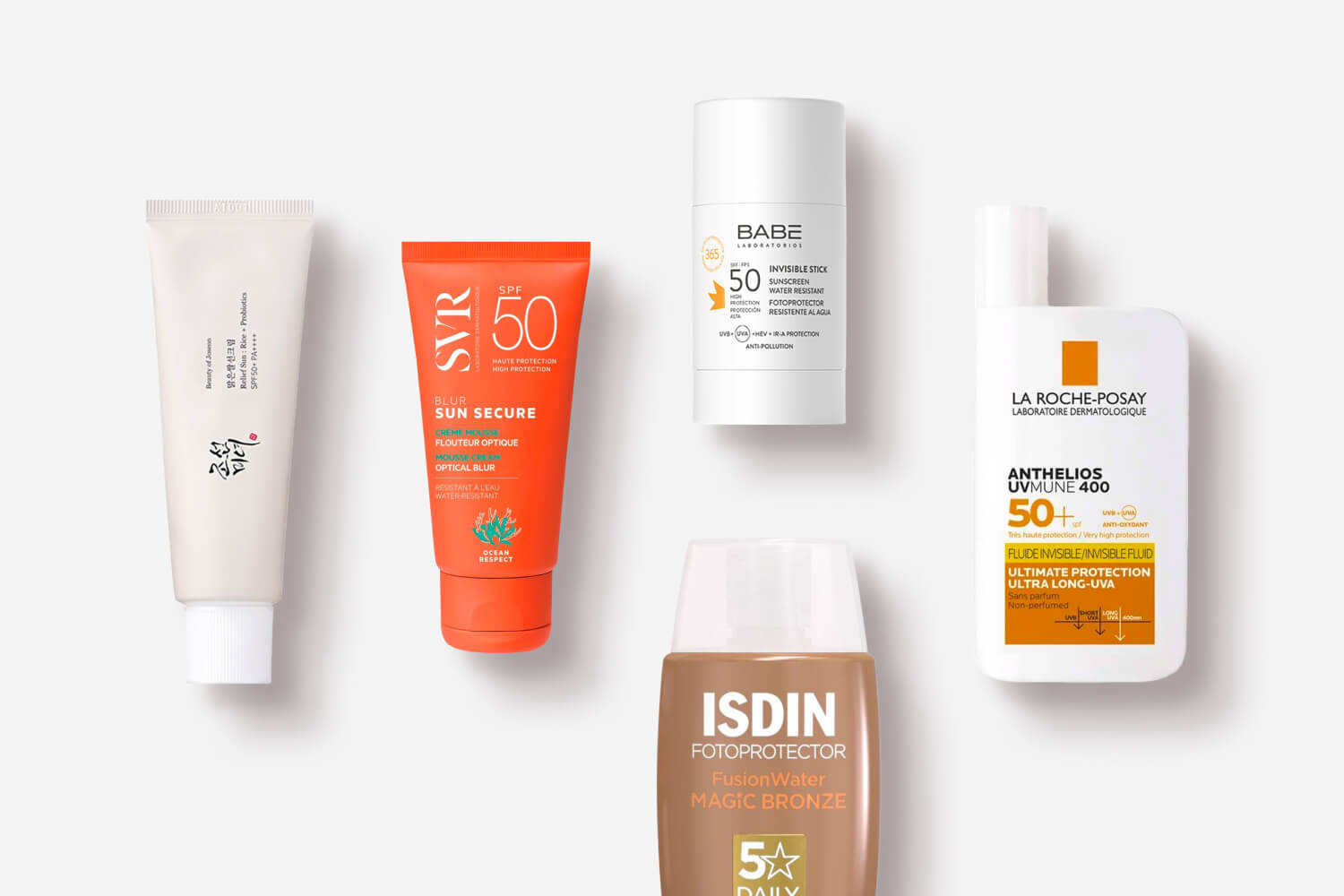
Sunscreen is one of the most essential—and most debated—products in the world of skincare. Much of this debate centers around the decades-old dilemma: what exactly is “chemical sunscreen”, as opposed to “mineral sunscreen”, and is it any good? Is it safe to use? What sort of ingredients are in it, and how can you find out?
Today we’re taking a deep dive into the world of chemical sunscreen: we’ll learn what it is, how to identify it, and what advantages it offers compared to mineral sunscreen. We’ll even show you some of our favorites, so you can pick and choose from a list of tried-and-tested products!
What is chemical sunscreen?
To put it very simply, “chemical” sunscreens are sunscreens that use sun filters other than zinc oxide and titanium dioxide.
To understand this a little better, it’s important to know that sunscreens acquire their protective benefits from a group of ingredients known as “sun filters.” Some sun filters are mineral, such as zinc oxide and titanium dioxide, while others are chemical. Nowadays, the cosmetics industry uses only two mineral filters, zinc oxide and titanium dioxide, but there are dozens of chemical filters available depending on the region where the products are developed and sold. In Europe, for example, there is a wider variety of sun filters available compared to the USA.
In the end, the distinction is simple: a “mineral sunscreen” is one that provides protection through the action of mineral sun filters, and a “chemical sunscreen” is one that provides protection through the action of chemical sun filters.
How does chemical sunscreen work?
The functioning of chemical sunscreens compared to mineral sunscreens is often a source of confusion, but let’s simplify it, starting from the very basics:
When it comes to application, chemical sunscreens work the same way as mineral sunscreens. You apply them to your skin, ensuring an even layer without missing any spots, and then you step out into the sun. Now, we used to believe that this is where they diverged: mineral sunscreens would reflect UV radiation away from your skin, while chemical sunscreens would absorb the radiation and convert it into heat. However, we’ve since learned that mineral sunscreens also do quite a bit of absorption. In short, the mechanisms that mineral and chemical sun filters use to protect you aren’t as different as all that.
If your priority is choosing a sunscreen that offers very high protection, then you shouldn’t focus on whether it’s mineral or chemical. Instead, focus on standardized scores like the SPF rating (for UVB radiation) and the UVA circle/PA rating (for UVA radiation).
Is chemical sunscreen better?
Now that you know how to define a chemical sunscreen and understand how it differs from a mineral sunscreen, you may be wondering: but what makes it better (or worse) than mineral sunscreen? As with most things in skincare, the decision of which is “better” for you will depend on the features you value in a product.
Chemical sunscreens have a lot going for them. One of the main advantages is related to their texture: by using only chemical sun filters, chemical sunscreens can avoid many of the texture-related issues that made traditional mineral sunscreens unpleasant and difficult to apply. We’re talking about the color and consistency of the product, specifically. Mineral sunscreens, which use mineral sun filters like zinc oxide and titanium dioxide, often have a white, thick texture due to the natural characteristics of these sun filters. At their worst, mineral sunscreens feel like thick white pastes that are incredibly difficult to blend into the skin–they make you look white-gray and shiny, and they feel heavy and uncomfortable on the skin. (At their best, though, mineral sunscreens are incredible.)
Because they use chemical sun filters that lack the color and texture characteristics of zinc oxide and titanium dioxide, chemical sunscreens offer more flexibility in terms of texture. They can be more fluid than traditional sunscreens and may even come in innovative textures like mousses or clear gels. Typically, they are also easier to apply and spread evenly on the skin.
How do you know if your sunscreen is mineral or chemical?
As we’ve mentioned, the difference between mineral and chemical sunscreen boils down to the type of sun filters used in the formula. Therefore, the only way to know if your sunscreen is mineral or chemical is to identify which filters are in it. This process can be either simple or complex: for a quick check, you can simply scan the ingredient list on your sunscreen, often found on the back of the product, and look for physical sun filters like zinc oxide and titanium dioxide. If you find one or both of these and nothing else, your sunscreen is mineral. If you can’t find these but see that there are other sun filters listed, your sunscreen is chemical. And there’s a third option: if your sunscreen contains zinc oxide and/or titanium dioxide alongside other sun filters, it’s a “hybrid” or “combo/combination” sunscreen.
But how, you may be wondering, do you identify the chemical sun filters among the many, many other ingredients on the ingredient list? That’s the complex part. Some chemical sun filters are easy to spot (think Homosalate or Octocrylene, which are relatively simple names to memorize and search for), and some are rather more challenging (like Tinosorb S, which shows up on ingredient lists as Bis-Ethylhexyloxyphenol Methoxyphenyl Triazine).
Now, because no one expects you to memorize the names of all chemical sun filters out there, the best way to identify which ones are in your sunscreen is simply to copy the ingredient list and paste it into an online skincare ingredient scanner. There are numerous websites and apps that can scan the ingredient list for you and categorize the ingredients by function. Once you see the sun filters grouped together, you’ll have an easier time identifying them!
Does chemical sunscreen go on before or after moisturizer?
Sunscreen, whether mineral or chemical, should always be the final step of your skincare routine—meaning, if you use moisturizer, you should be applying your sunscreen after the moisturizer.
Depending on your skin type and concerns, you may also choose to apply your sunscreen in place of your moisturizer. Take it from this author, who likes a very simple morning skincare routine: cleanser, vitamin C serum, sunscreen, and that’s it!
Can you use chemical sunscreen while pregnant?
Nowadays, there are many concerns about which cosmetic products—especially skincare—you can safely use during pregnancy. Sunscreen is often in the spotlight when it comes to these concerns, but the truth is that, as far as science knows, it is perfectly safe to use chemical sunscreens during pregnancy.
In fact, and considering that pregnancy carries an extra risk of developing dark spots and hyperpigmentation, we recommend looking for sunscreen specifically designed to prevent pigmentation issues, so you get through your pregnancy without (yet another) reason for concern.
Which is the best 100% chemical sunscreen?
Here at Care to Beauty, we love our 100% chemical sunscreens, so much so that a list of our favorite chemical sunscreens is essentially a list of our favorite sunscreens overall. You may have seen us recommend these products time and time again, and there’s a good reason for that: we truly love the formulas and textures that we’re about to share with you.
La Roche-Posay Anthelios UVMune 400 Invisible Fluid Fragrance-Free SPF50+
Best fluid sunscreen
The La Roche-Posay Anthelios UVMune 400 needs no introduction: at this point, it’s probably one of the most famous sunscreens in the world, and for good reason! Its fluid, water-like texture hides a very comprehensive broad-spectrum formula, which protects not only against UVB rays but also against ultra-long UVA rays, thanks to a chemical sunscreen filter you won’t find in many other products: Mexoryl 400. As if that weren’t enough, this product is also formulated for daily use on all skin types and tones: it’s oil-free, fragrance-free, and doesn’t leave a white cast on the skin.
Sun filters:
- Bis-Ethylhexyloxyphenol Methoxyphenyl Triazine (Tinosorb S)
- Butyl Methoxydibenzoylmethane (Avobenzone)
- Diethylamino Hydroxybenzoyl Hexyl Benzoate (Uvinul A Plus,)
- Drometrizole Trisiloxane (Mexoryl XL)
- Ethylhexyl Salicylate (Octisalate)
- Ethylhexyl Triazone (Uvinul T 150)
- Methoxypropylamino Cyclohexenylidene Ethoxyethylcyanoacetate (Mexoryl 400)
- Terephthalylidene Dicamphor Sulfonic Acid (Mexoryl SX)
Beauty of Joseon Relief Sun Rice + Probiotics SPF50+
Best Korean chemical sunscreen
Did you know that one of the most popular Korean sunscreens out there is 100% chemical? We’re talking about the Beauty of Joseon Relief Sun Rice + Probiotics SPF50+, a creamy sunscreen known for its hydrating formula and dewy finish. The formula, rich in rice extract and grain fermented extracts, keeps the skin hydrated throughout the day, while the chemical sunscreens offer broad-spectrum protection against UVB and UVA light.
Sun filters:
- Diethylhexyl Butamido Triazone (Uvasorb HEB)
- Diethylamino Hydroxybenzoyl Hexyl Benzoate (Uvinul A Plus)
- Ethylhexyl Triazone (Uvinul T 150)
- Methylene Bis-Benzotriazolyl Tetramethylbutylphenol (Tinosorb M)
SVR Sun Secure Blur Optical Mousse Cream SPF50+
Best matte chemical sunscreen
One of our favorite matte sunscreens is the SVR Sun Secure Blur Optical Mousse Cream SPF50+, a sunscreen with an innovative mousse texture that blends into the skin, leaving a velvety finish that evens out the complexion and minimizes small imperfections. Ideal for those looking for a matte finish, this sunscreen also works as a perfect makeup base: in short, it’s the perfect sunscreen for everyday use!
Sun filters:
- Bis-Ethylhexyloxyphenol Methoxyphenyl Triazine (Tinosorb S)
- Diethylamino Hydroxybenzoyl Hexyl Benzoate (Uvinul A Plus)
- Diethylhexyl Butamido Triazone (Uvasorb HEB)
- Ethylhexyl Triazone (Uvinul T 150)
Avène Sun Intense Protect Fluid Fragrance-Free SPF50+
Best chemical sunscreen for sensitive skin
There is a common belief that those with sensitive skin should only use mineral sunscreen, but this isn’t necessarily true. A mineral sunscreen can be a great choice for sensitive skin, but there are chemical sunscreens which are just as suitable, such as the Avène Sun Intense Protect Fluid Fragrance-Free SPF50+. With a hybrid texture that is quickly absorbed by the skin, this sunscreen offers broad-spectrum protection and is fully compatible with sensitive skin and eyes. And before you ask, yes, it’s fragrance-free!
Sun filters:
- Bis-Ethylhexyloxyphenol Methoxyphenyl Triazine (Tinosorb S)
- Diethylamino Hydroxybenzoyl Hexyl Benzoate (Uvinul A Plus)
- Ethylhexyl Triazone (Uvinul T 150)
- Phenylene Bis-Diphenyltriazine (TriAsorB)
ISDIN Fotoprotector Fusion Water Color Bronze SPF50
Best tinted chemical sunscreen
It’s not hard to find tinted chemical sunscreens, but the ISDIN Fotoprotector Fusion Water Color Bronze SPF50 is undoubtedly one of our favorites. With the ultra-fluid texture we know and love from the original ISDIN Fusion Water formula, this sunscreen hydrates, protects, and evens out the skin in a single step, helping to conceal imperfections and create a more uniform complexion. It’s available in 3 different shades, so you can opt for the one that suits you the best.
Sun filters:
- Bis-Ethylhexyloxyphenol Methoxyphenyl Triazine (Tinosorb S)
- Butyl Methoxydibenzoylmethane (Avobenzone)
- Ethylhexyl Salicylate (Octisalate)
- Ethylhexyl Triazone (Uvinul T 150)
- Phenylbenzimidazole Sulfonic Acid (Ensulizole)
Vichy Capital Soleil UV-Age Daily Water Fluid SPF50+
Best chemical sunscreen that doesn’t burn the eyes
For those with sensitive skin and eyes who don’t want to forgo daily sun protection, we like to recommend the Vichy Capital Soleil UV-Age Daily Water Fluid SPF50+. With an ultra-light formula enriched with niacinamide and probiotic fractions, this product goes far beyond sun protection, serving as a daily skincare product with a moisturizing and regenerating action. The fact that it doesn’t sting the eyes is a welcome bonus!
Sun filters:
- Bis-Ethylhexyloxyphenol Methoxyphenyl Triazine (Tinosorb S)
- Butyl Methoxydibenzoylmethane (Avobenzone)
- Drometrizole Trisiloxane (Mexoryl XL)
- Ethylhexyl Salicylate (Octisalate)
- Ethylhexyl Triazone (Uvinul T 150)
- Terephthalylidene Dicamphor Sulfonic Acid (Mexoryl SX)
Eucerin Sun Oil Control Gel-Cream Dry Touch SPF50+
Best chemical sunscreen for oily skin
Here at Care to Beauty, one of our favorite sunscreens to recommend for oily skin is the Eucerin Sun Oil Control Gel-Cream Dry Touch SPF50+–which just so happens to be a 100% chemical sunscreen. With an ultra-light texture that leaves the skin with a dry touch and a matte appearance for up to 8 hours, this is the perfect sunscreen for anyone looking for a product that meets the needs of oily and acne-prone skin.
Sun filters:
- Butyl Methoxydibenzoylmethane (Avobenzone)
- Ethylhexyl Salicylate (Octisalate)
- Homosalate
- Octocrylene
- Phenylbenzimidazole Sulfonic Acid (Ensulizole)
Babé Invisible Stick Sunscreen SPF50
Best chemical sunscreen stick
If you’re looking for a chemical sunscreen stick, we recommend the Babé Invisible Stick Sunscreen SPF50, a transparent stick that allows for quick and easy sunscreen reapplication throughout the day. Its combination of chemical sun filters offers broad-spectrum protection, while the addition of bisabolol provides the skin with a moisturizing, soothing, and regenerating effect.
Sun filters:
- Bis-Ethylhexyloxyphenol Methoxyphenyl Triazine (Tinosorb S)
- Butyl Methoxydibenzoylmethane (Avobenzone)
- Octocrylene
- Ethylhexyl Salicylate (Octisalate)
- Ethylhexyl Triazone (Uvinul T 150)
Looking for yet more sunscreens? Explore our huge selection of European sunscreens–chemical and otherwise–in the shop!
Beauty Writer & Editor


 La Roche-Posay Anthelios UVMune 400 Invisible Fluid Fragrance-Free SPF50+
La Roche-Posay Anthelios UVMune 400 Invisible Fluid Fragrance-Free SPF50+
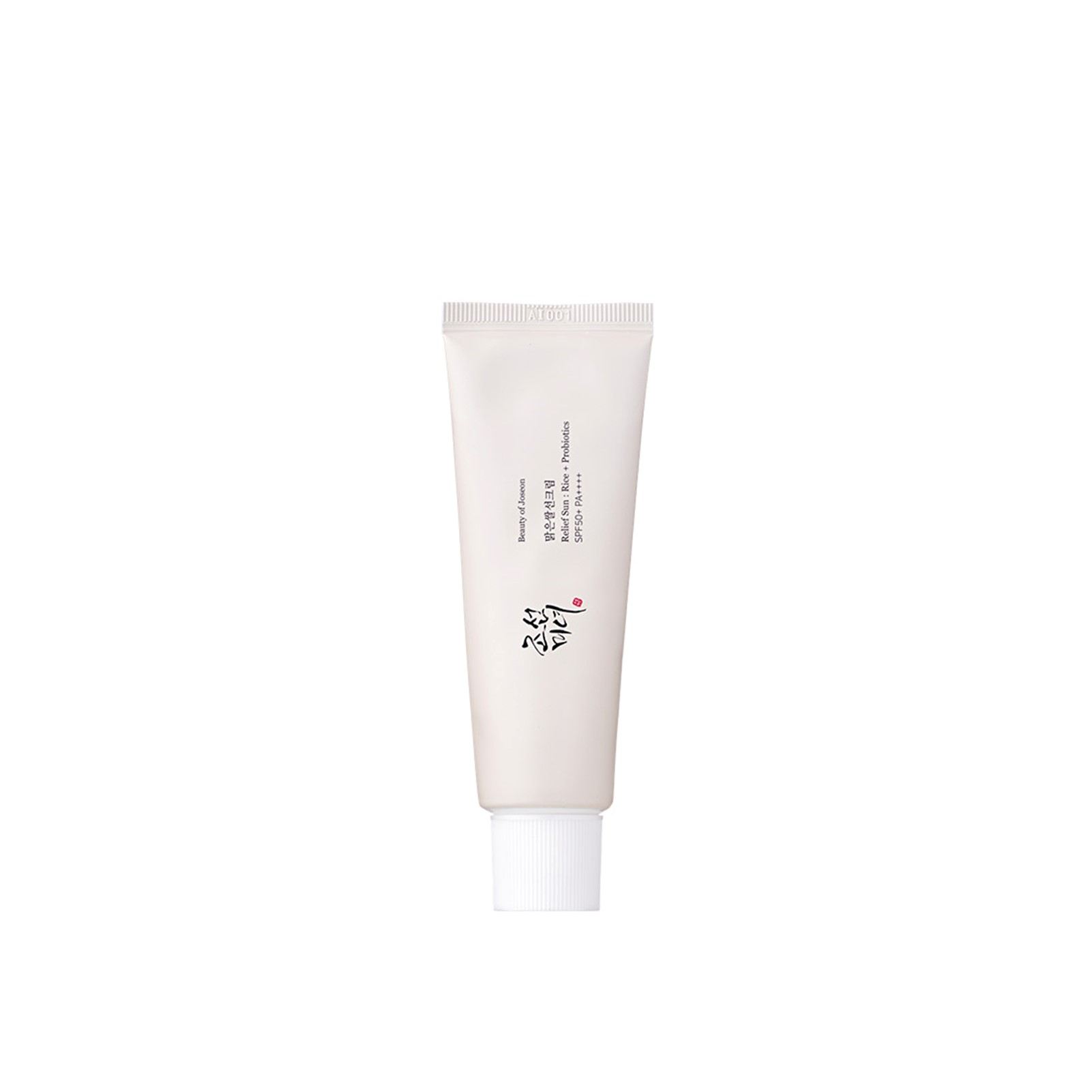 Beauty of Joseon Relief Sun Rice + Probiotics SPF50+
Beauty of Joseon Relief Sun Rice + Probiotics SPF50+
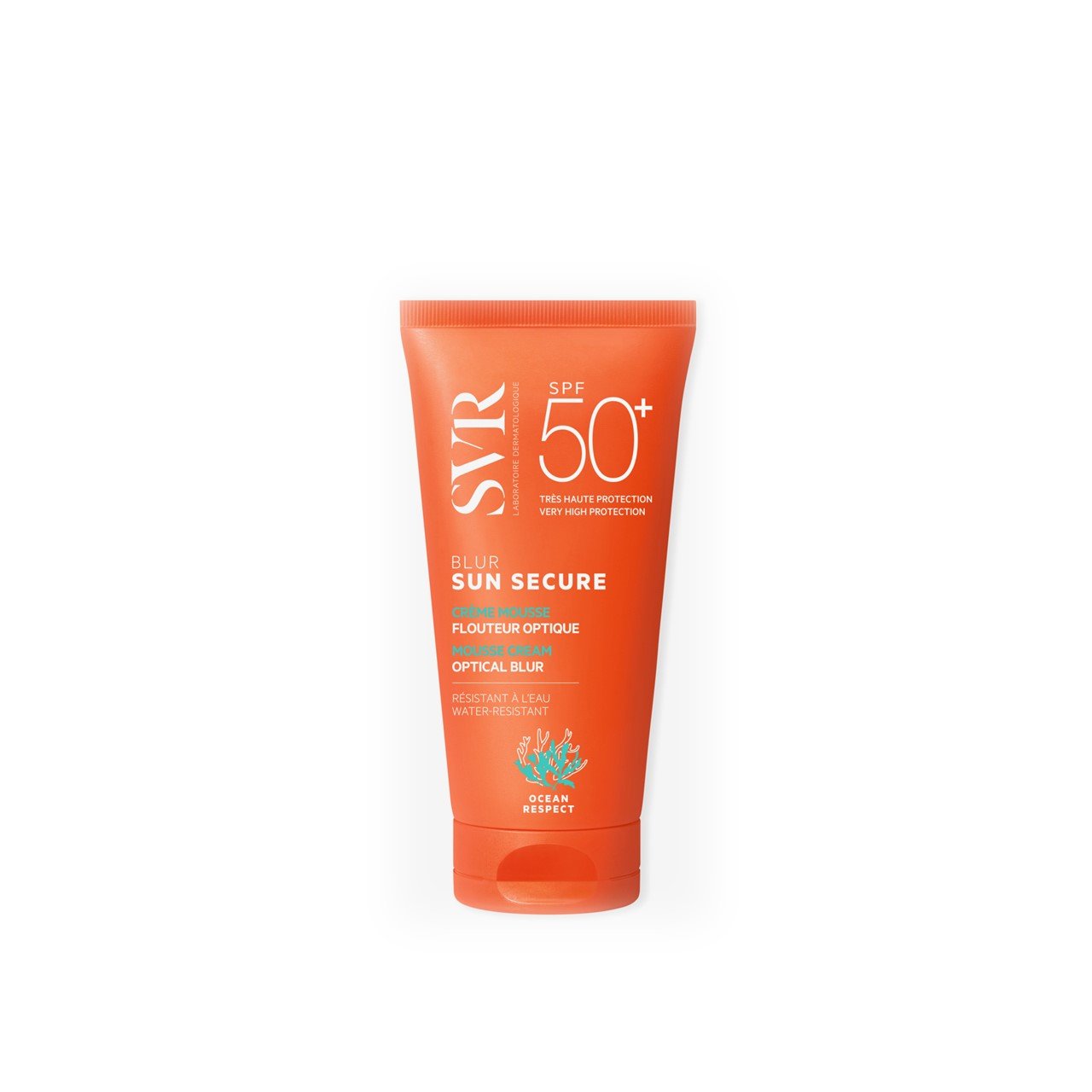 SVR Sun Secure Blur Optical Mousse Cream SPF50+
SVR Sun Secure Blur Optical Mousse Cream SPF50+
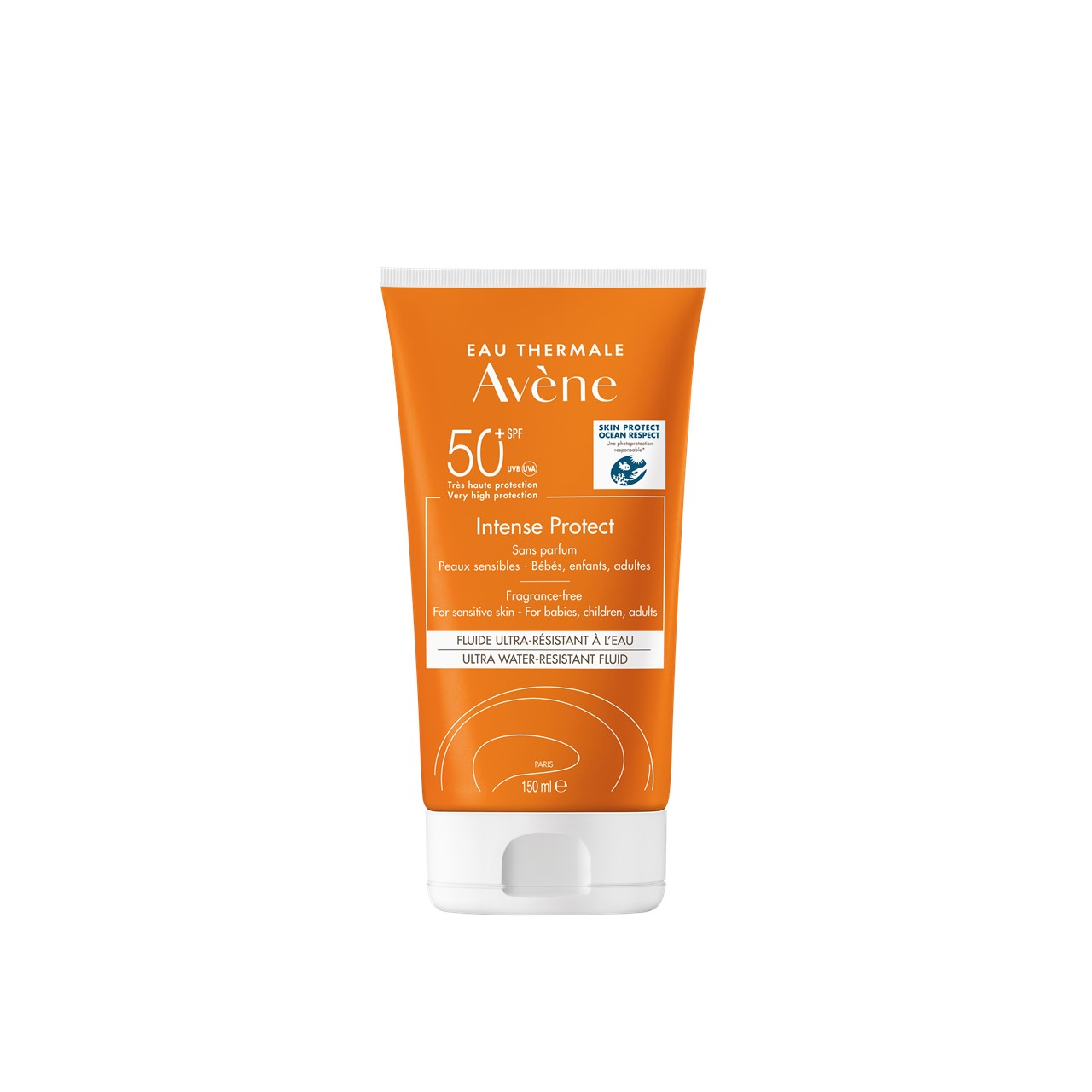 Avène Sun Intense Protect Fluid Fragrance-Free SPF50+
Avène Sun Intense Protect Fluid Fragrance-Free SPF50+
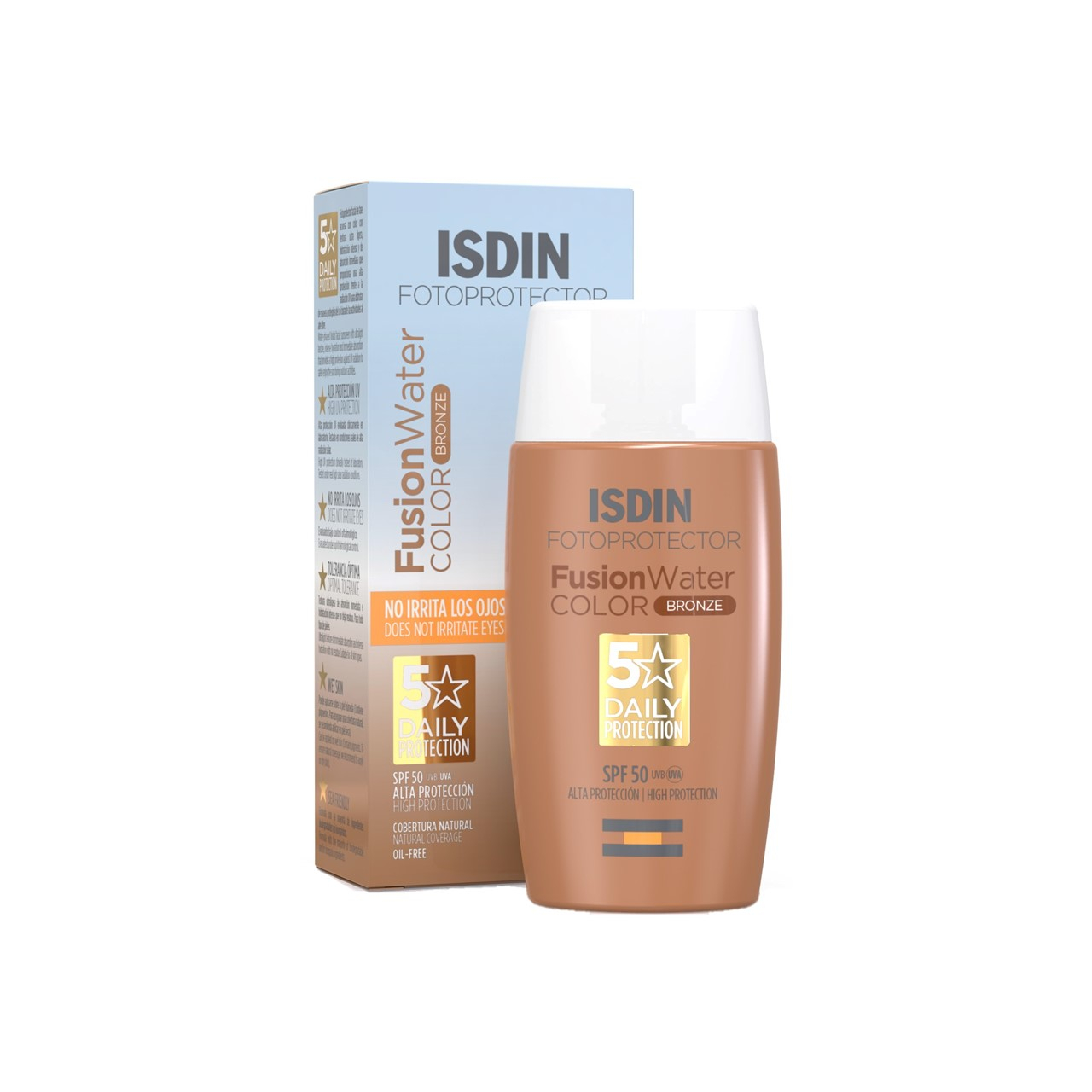 ISDIN Fotoprotector Fusion Water Color Bronze SPF50
ISDIN Fotoprotector Fusion Water Color Bronze SPF50
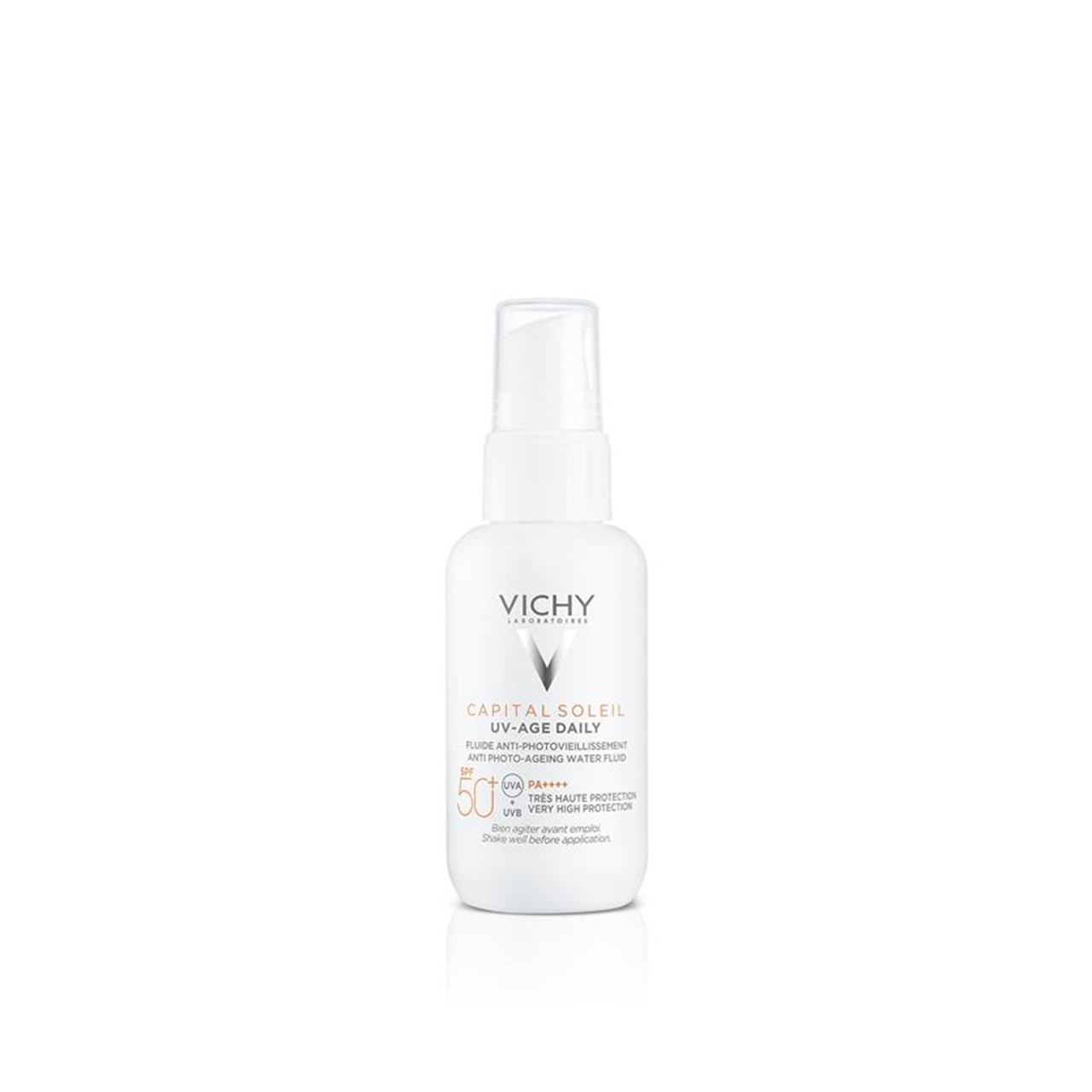 Vichy Capital Soleil UV-Age Daily Water Fluid SPF50+
Vichy Capital Soleil UV-Age Daily Water Fluid SPF50+
 Eucerin Sun Oil Control Gel-Cream Dry Touch SPF50+
Eucerin Sun Oil Control Gel-Cream Dry Touch SPF50+
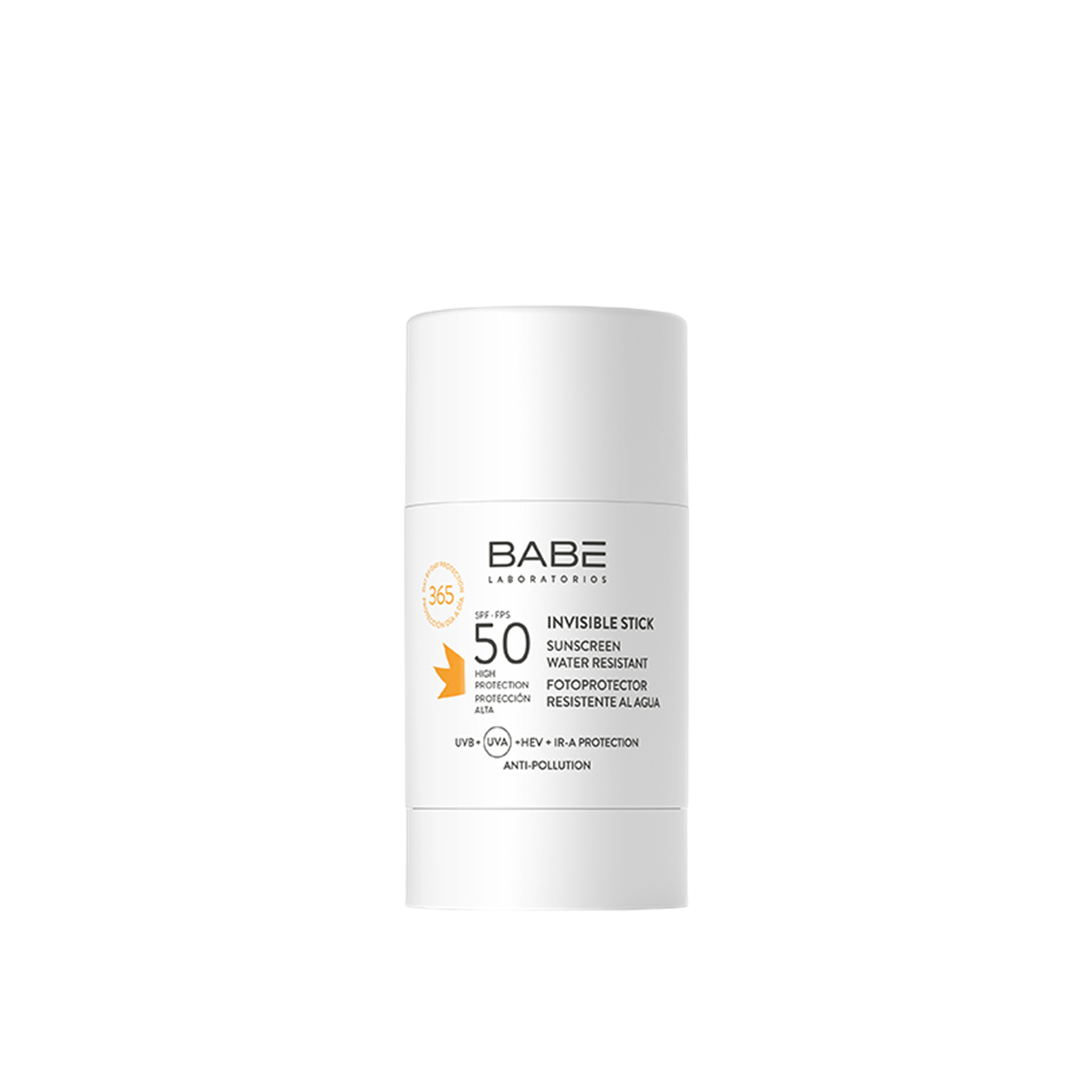 Babé Invisible Stick Sunscreen SPF50
Babé Invisible Stick Sunscreen SPF50
